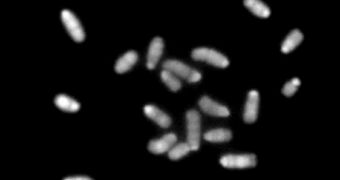In a groundbreaking study that could make it easier for experts to establish correlations between individual genes and their function, scientists at the University of Cambridge managed to construct the first mammalian cell that features a single chromosome set.
The work – funded by EMBO and the Wellcome Trust – could have just set the groundwork for a large number of new cures against a wide array of genetic disorders, or conditions in which genes play a very important role.
Based on future discoveries on the relationships between genes and certain bodily processes and functions, experts will be able to develop chemicals or genetic manipulation technique that would act locally, on a single process.
In turn, this would make it easier for geneticists to turn the function and expression of a gene either on or off, which is something they have been trying to do for a long time. Now, the capability appears to be within reach, the team explains.
The reason why the new achievement is so important is that all other cells in nature feature two sets of chromosomes, one from each parent. Together, these information repositories decide how the new organism develops. Specific combinations of chromosome sets increase or reduce risks of disease.
The technique researchers used generally involved implanting zebrafish eggs with a set of chromosomes. In the new experiments, the group used unfertilized mouse egg cells, marking the first time mammallian stem cells were produced using this approach.
The investigation was conducted by Dr. Anton Wutz and Dr. Martin Lee, who are both researchers at the Cambridge Wellcome Trust Center. Details of their work appear in last week's issue of the top scientific journal Nature.
Cells obtained in this manner, the team explains, can even be injected back into the mice, so that researchers can track their function and development. By doing so, the time needed to establish clear correlations between genes and functions would be greatly reduced.
“These embryonic stem cells are much simpler than normal embryonic mammalian stem cells,” explains Dr. Wutz, who is a Wellcome Trust senior research fellow.
“Any genetic change we introduce to the single set of chromosomes will have an easy-to-determine effect. This will be useful for exploring in a systematic way the signalling mechanisms within cell and how networks of genes regulate development,” he adds.
“This technique will help scientists overcome some of the significant barriers that have so far made studying the functions of genes so difficult. This is often the first step towards understanding why mutations lead to disease and, ultimately, to developing new drugs treatments,” Dr. Michael Dunn comments.
The expert, who is the head of Molecular and Physiological Sciences at the Wellcome Trust, was not a part of the new investigation.

 14 DAY TRIAL //
14 DAY TRIAL //